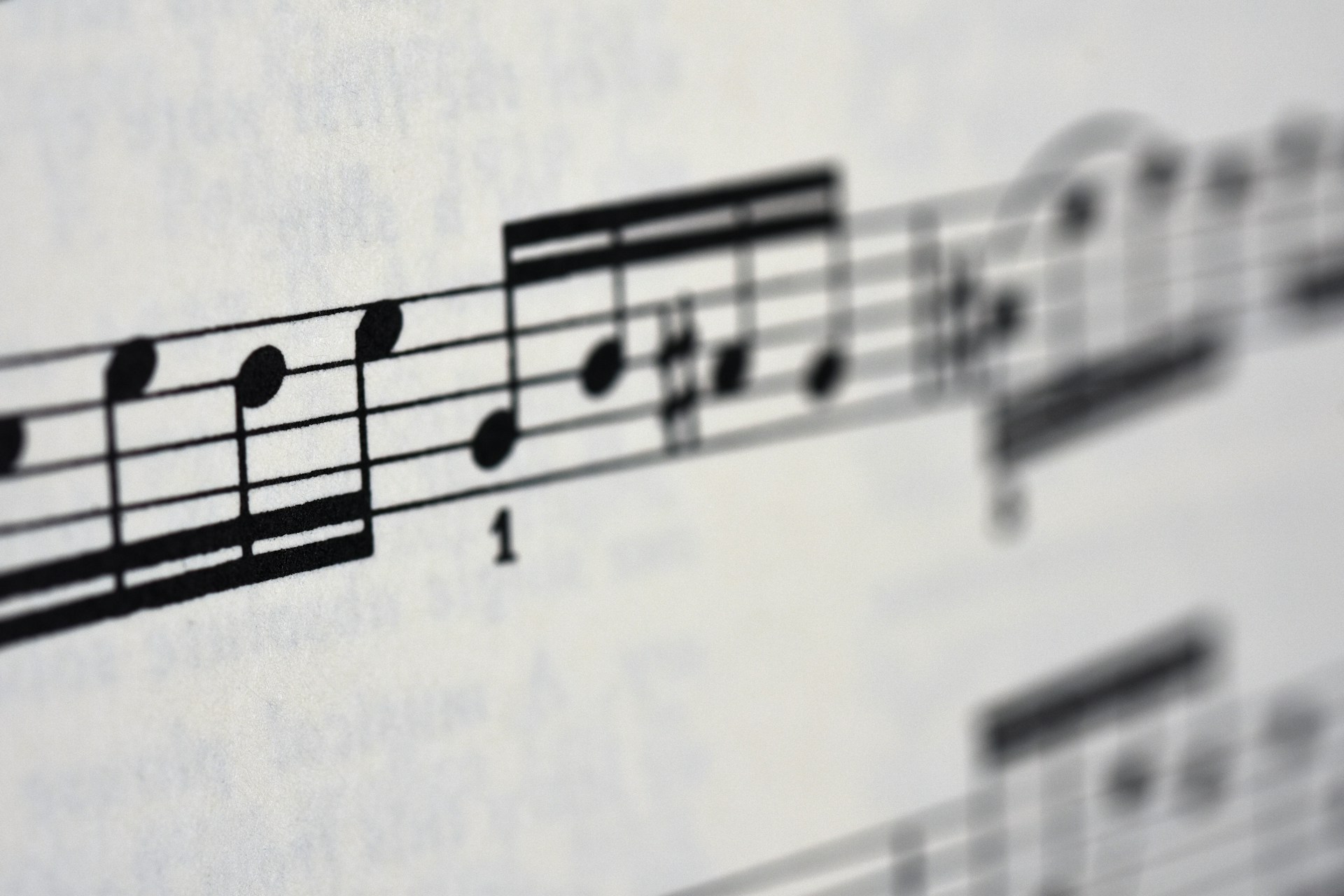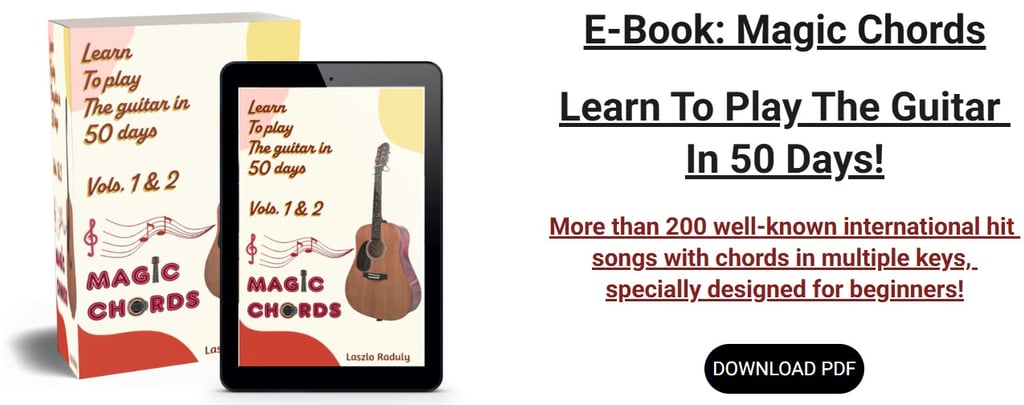
Guitar Basics Made Easy: No Music Theory Needed!
Discover guitar basics made easy for beginners. Simple lessons, easy chords and fun practice routines with no music theory needed to start playing confidently!!
magicchords.com
11/3/2025
Introduction to Guitar Basics
Learning to play the guitar is a fulfilling journey that opens a world of creative expression for beginners. While the instrument may seem daunting at first, grasping the essential guitar basics can be straightforward and enjoyable. This blog post aims to demystify the initial steps in your musical journey, emphasizing that a deep understanding of music theory is not a prerequisite for starting to play the guitar. For many aspiring musicians, the thought of delving into music theory can be intimidating. However, the beauty of learning guitar lies in its accessibility; you can begin strumming chords and playing your favorite songs with minimal background knowledge. This guide will walk you through fundamental concepts such as chord shapes, strumming patterns, and tuning methods, all designed to make your entry into the world of guitar seamless and engaging.
Throughout this blog post, we will cover essential topics that every beginner should become familiar with. Key aspects include understanding the parts of the guitar, basic finger placements, and simple exercises to enhance your skills. Each component is crafted to ensure that you not only learn how to play- but also develop a foundational appreciation for the instrument, without feeling overwhelmed by complex theories. By focusing on practical skills, this approach nurtures a creative mindset, allowing you to express yourself through music. Whether your goal is to play in a band, accompany your singing, or enjoy personal leisure, the fundamentals of guitar will empower you to achieve these dreams. As you progress, you may find that more advanced concepts become naturally integrated into your playing, leading to a more enriched musical experience.
Essential Guitar Equipment for Beginners
Embarking on your guitar journey requires understanding the essential equipment necessary to ensure a smooth and enjoyable experience. The first consideration is selecting the appropriate guitar, with the two most common types being acoustic and electric guitars. Acoustic guitars are often recommended for beginners due to their simplicity and portability. They do not require additional equipment, as they are self-amplified and can be played anywhere. On the other hand, electric guitars can offer expansive tonal options and are generally used in various music genres, but they require an amplifier, making them less portable.
Once you have chosen your guitar type, it's essential to invest in various accessories that can enhance your experience. One crucial accessory is the guitar pick, which aids in producing sound by striking the strings. Picks come in different shapes, sizes, and thicknesses, so experimenting with various types can help you find one that feels comfortable. A tuner is another vital tool, as it ensures your guitar is always in tune, which is crucial to developing your ear for music. Clip-on tuners are popular among beginners for their ease of use and accuracy.
A comfortable strap is important for those who wish to play while standing. A good strap not only supports the guitar's weight but also provides stability, allowing for better playing posture. When choosing your guitar, consider factors such as body size, playability, and sound preference. It may be beneficial to visit a local music store to physically try different models before making a purchase. By ensuring you have the right equipment, you are setting a solid foundation for your musical journey, making it easier to focus on learning and improving your skills.
Basic Guitar Chords You Need to Know
Understanding basic guitar chords is essential for any beginner looking to develop their skills. These chords are the building blocks of countless songs, serving as a foundation for creativity and musical expression. To start, it is important to master both major and minor chords, as they provide a wide array of options for your playing style.
Major chords typically convey a bright and happy sound, while minor chords introduce a more somber tone. It is crucial to familiarize yourself with the finger placements for these chords to ensure smooth transitions between them. Let's begin with some fundamental major chords.
The C major chord is played by placing your ring finger on the 3rd fret of the A string, your middle finger on the 2nd fret of the D string, and your index finger on the 1st fret of the B string. Strum from the A string down. The G major chord involves positioning your middle finger on the 3rd fret of the low E string, your index finger on the 2nd fret of the A string, your ring finger on the 3rd fret of the B string, and your pinky on the 3rd fret of the high E string, strumming all six strings. Finally, the D major chord is played by placing your index finger on the 2nd fret of the G string, your ring finger on the 3rd fret of the B string, and your middle finger on the 2nd fret of the high E string, strumming from the D string down.
Moving on to minor chords, the A minor chord requires you to position your index finger on the 1st fret of the B string, your ring finger on the 2nd fret of the D string, and your middle finger on the 2nd fret of the G string, strumming from the A string down. The E minor chord includes your middle finger on the 2nd fret of the A string and your ring finger on the 2nd fret of the D string, strumming all six strings. Lastly, the D minor chord involves placing your index finger across the 1st fret of the high E, B, and G strings, with your ring finger on the 3rd fret of the B string, strumming from the D string down. Mastering these fundamental chords will serve as an excellent starting point for your journey in playing guitar. Practice transitioning between these chords to build dexterity in your fingers, and soon, you will find that your ability to play a wide variety of songs will significantly expand.
Guitar Basics: Strumming Patterns for Beginners
For those venturing into the world of guitar, mastering strumming patterns is a key step in enhancing overall playing ability. Strumming serves as the rhythmic backbone of a piece, allowing beginners to accompany chords and songs effectively. To begin, one should familiarize themselves with the basic downstrokes and upstrokes. A downstroke is simply a strum motion that moves downward across the strings, while an upstroke moves upward. When combined, these strokes create a flow that adds depth to the music.
Initially, practicing just downstrokes on steady beats can help build confidence. Beginners might consider strumming down on each beat of a 4/4 measure, creating a simple yet effective foundation. Once comfortable, integrating upstrokes can introduce a more dynamic element to the playing. A common pattern for beginners is the "Down, Down, Up, Up, Down" technique, which maintains an even rhythm while providing variety.
Rhythm patterns are essential for developing timing and consistency in strumming. A simple way to practice rhythm is to use a metronome or play along with a favorite song. This not only aids in timing but also encourages learners to match their strumming with the tempo of the music. Additionally, varying dynamics, such as strumming harder on downbeats and softer on upbeats, can make a significant difference in sound quality.
As you become more proficient, experiment with combining different strumming patterns. For instance, you can alternate between basic downstrokes for verses and more complex patterns for choruses in a song. This versatility allows beginners to tailor their playing style, making it enjoyable and personally expressive. Ultimately, developing a solid grasp of strumming techniques will significantly enhance your guitar playing experience.
Playing Simple Songs: A Step by Step Guide
Learning to play the guitar can be a fulfilling experience, and one of the most effective ways to gain confidence as a beginner is to start playing simple songs. This guide provides a structured approach to help you navigate the process of playing familiar tunes using the chords you have already learned. The focus here is on making the learning experience enjoyable, enabling you to immerse yourself in the joy of music without the hurdles of complex music theory.
To begin, choose a selection of songs that are not only popular but also utilize basic chords. Examples include classics like "Knockin' on Heaven's Door" by Bob Dylan or "Sweet Home Alabama" by Lynyrd Skynyrd. These songs often hinge on simple chord progressions that can be repeated, making them ideal for beginner guitarists. Familiar tunes can serve as both motivation and a reward for your efforts.
Once you’ve selected a song, familiarize yourself with the chord shapes and transitions. Start by playing each chord individually, paying attention to finger placement and strumming technique. It is essential to practice transitioning between chords smoothly. For instance, when moving from G to C major, position your fingers slowly while maintaining a steady rhythm. This step is crucial for enhancing your overall fluidity as you progress.
Next, break the song down into manageable sections. Focus on playing one verse or the chorus at a time. Repeat these segments until you feel comfortable. Gradually, piece together the sections, ensuring you maintain an even tempo. Using a metronome can also help you stay on beat, providing a valuable practice tool. Playing simple songs is a rewarding method for beginners to develop their guitar skills. By following these steps, you will experience the satisfaction of performing familiar melodies without the complexities of music theory. With consistent practice and a selection of enjoyable songs, you can elevate your guitar playing journey significantly.
Guitar Basics: Tips for Practicing Effectively
For beginner guitarists, developing a consistent and effective practice routine can significantly enhance their learning experience. The first step towards effective practicing is to set clear, attainable goals. Goals could range from mastering a particular chord sequence to playing a favorite song by ear. Having specific objectives not only provides direction but also serves as a meaningful measure of progress. Start by identifying short-term goals that can be achieved within a week or a month, gradually increasing the complexity as skills improve.
Creating a dedicated practice schedule is equally important. Allocating a specific time each day for practice fosters discipline and helps to establish a routine. Aim for shorter, focused sessions rather than lengthy marathons, which can lead to fatigue and boredom. Even 20 to 30 minutes of daily practice can yield beneficial results if performed consistently. Emphasize quality over quantity, ensuring that each session entails concentrated effort on the chosen material.
Incorporating a variety of techniques during practice can keep sessions engaging and prevent monotony. Alternate between scales, chord changes, and song practice. Working on techniques such as fingerpicking, strumming patterns, or even improvisation can enrich your playing style. Additionally, consider employing a metronome to develop timing, or explore online tutorials to gain new perspectives and improve musicianship.
Always allow for some flexibility in your practice. If a particular technique proves challenging, it is beneficial to adjust your goals or methods rather than becoming frustrated. Remember that learning guitar is a journey that requires patience and persistence. By fostering an encouraging environment, maintaining a steady practice schedule, and embracing varied techniques, beginner guitarists can enjoy a fulfilling and rewarding musical experience.
Guitar Basics: Resources for Further Learning
As you embark on your journey to master the guitar, numerous resources are available that can significantly enhance your learning experience beyond the basics. The digital age has ushered in a plethora of online courses, tutorial videos, and applications that cater to a wide range of learning preferences. Whether you prefer structured lessons or casual self-paced guides, you are sure to find something that fits your needs.
Online platforms such as Udemy, Coursera, and Skillshare offer comprehensive courses designed by experienced instructors. These courses often cover various styles and techniques, allowing you to personalize your education. Many of these platforms provide beginner-friendly options that do not require a background in music theory, making them approachable for everyone. Additionally, they usually allow for a flexible schedule, enabling you to learn at your own pace and revisit materials as necessary.
For those who enjoy more visual learning, YouTube is an invaluable resource. Numerous channels are dedicated to guitar tutorials, covering everything from basic chords to advanced techniques. Channels like JustinGuitar and Marty Music provide step-by-step guides tailored for beginners and intermediate players. Furthermore, video tutorials often include play-along segments that make practicing more interactive and enjoyable.
Mobile applications also play a crucial role in self-guided guitar learning. Apps like Yousician, Fender Play, and Ultimate Guitar offer chord charts, lyric sheets, and interactive lessons that help you practice effectively. The convenience of having these resources on your smartphone or tablet cannot be understated, as they allow you to take your practice with you, whether at home or on the go.
Finally, joining online communities or forums can provide additional support and motivation. Websites like Reddit have dedicated threads for guitarists where you can ask questions, share experiences, and gain insights from others on similar journeys. The sense of community can play a vital role in sustaining your musical growth and enthusiasm.


